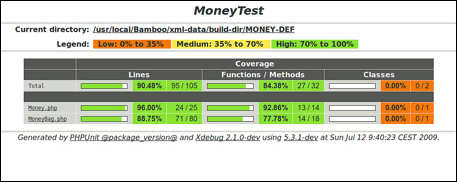Code Coverage is a white box testing methodology, used to describe the degree to which the source code of a program is tested by a particular test suite. Simply saying, code coverage is performed to check whether your tests are actually testing your code or not. With code coverage, one can tell how much of your code is being tested by running the test.
[leaderad]
In software testing, a program with high code coverage is tested first than a program with less code coverage. It can be measured manually or automatically by using automated tools. Its role is most beneficial during the module testing phase. It is also sometimes called as test coverage.
Coverage can be easily calculated by the below given formula:
Coverage = Number of coverage items covered / Total number of coverage items * 100
Let’s look at the pros and cons of using code coverage technique:

Pros:
- Brief Circulation
- Creative Working
- Defect Detector
- Smart Utilization
- Quantitative Approach
It checks the areas of a program that are not executed by a set of test cases. In this case, one needs to make a note of the failure results and again exercise the areas of a program by a set of test cases.
Code Coverage has the ability to identify missing test cases and can create additional test cases to increase coverage whenever necessary.
With different types of coverage implementation on a program, it helps in detecting defects early in the stages of SDLC and which will further increase productivity and quality of product. The higher the percentage of coverage, lesser is the chance to have defects in a program.
A simple and easy way to attain your project productivity in a market is by practicing code coverage smartly and accurately in many ways such as maintaining projects time limitation, cost overflow and scope of a project.
Maintaining quality of a product is a main active focus of a software industry and this can be achieved directly or indirectly by measuring quantitative code coverage in a code of the program for a given project. Higher the quantity of coverage better will be the quality of a product or software application.
Cons:
- Not a comprehensive program
There is no 100% coverage guarantee for a program that it will not have any defects in it. Defects can occur at any stages of SDLC and can be skipped and followed to the next stage. This can be only maintained by continuously performing quality assurance and fixing up of a bug during the current stage.
Wrapping Up
Code Coverage is a useful measure to describe the degree to which the source code is tested. With this, the chances of containing software bugs become lesser. There are different metrics used to calculate code coverage and it is a useful measure in the field of software testing. You can also get more details about the various code coverage tools for different programming languages by clicking here.
What are your views about code coverage? Let us know in the comments section.
